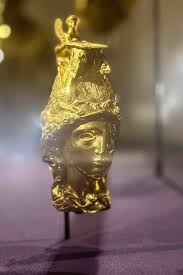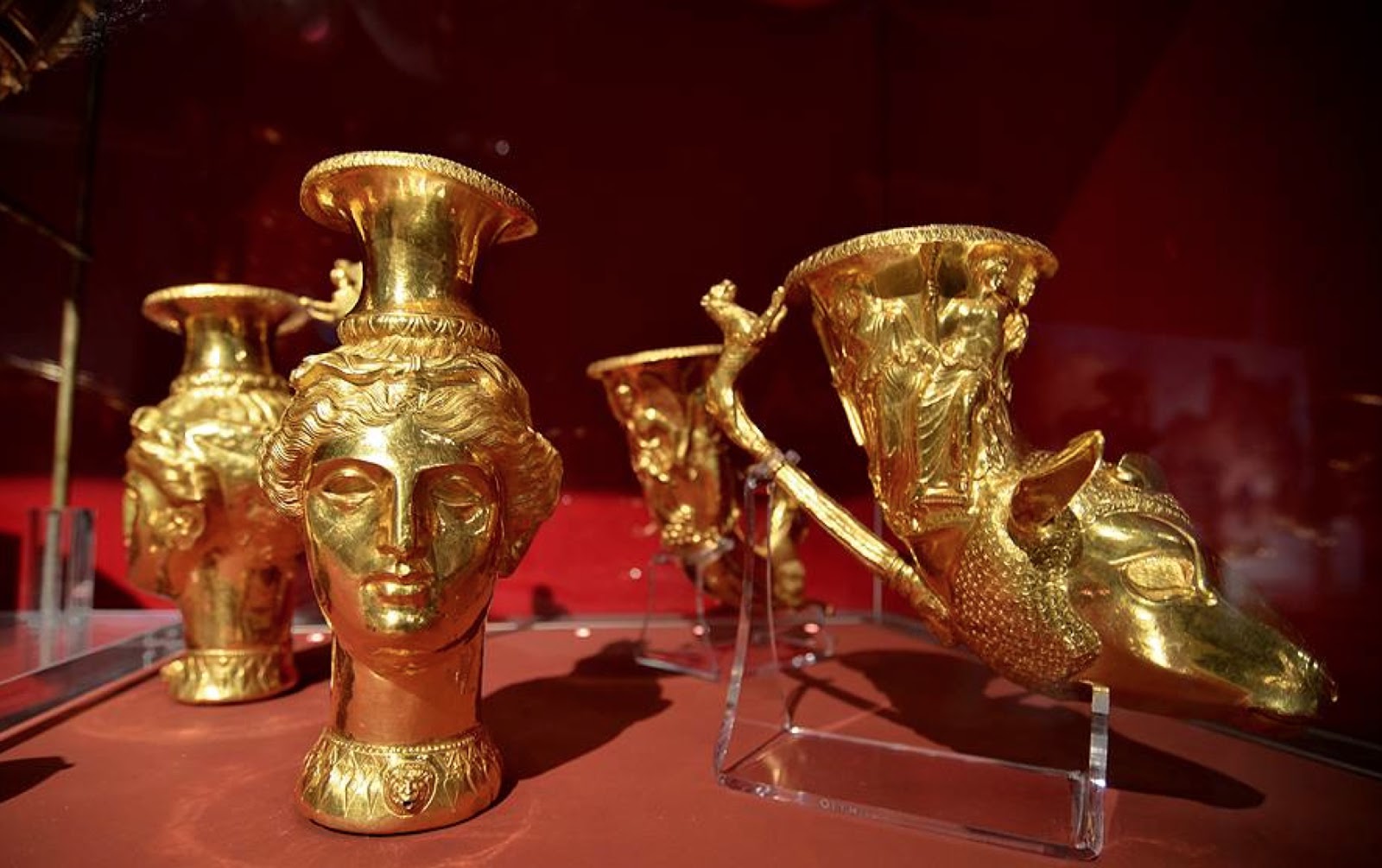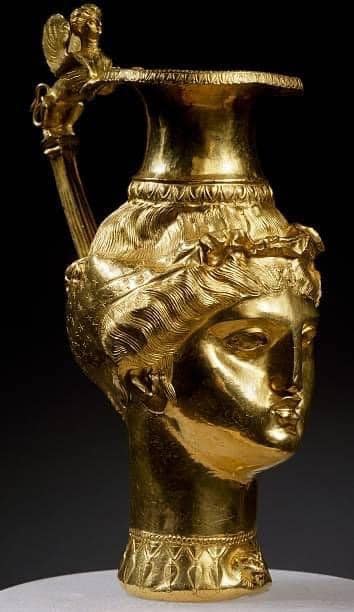In 1949, a remarkable discovery was made in the small town of Panagyurishte, Bulgaria: a treasure trove of exquisite golden artifacts that has since captured the imagination of historians and archaeologists alike. Among these priceless relics is a golden rhyton, a ceremonial drinking vessel, adorned with the head of a goddess or Amazonian figure. Dated between 400-300 BC, this rhyton is a testament to the skill and artistry of the Thracian civilization.
The Discovery of the Panagyurishte Treasure

The treasure was uncovered by accident when three brothers—Pavel, Petko, and Michail Deikov—were digging for clay to make bricks. To their astonishment, they stumbled upon a cache of stunning golden objects. This find consisted of nine vessels: a phiale (a shallow libation bowl), an amphora (a two-handled jar), three oinochoai (wine jugs), and four rhytons. Collectively, these items weigh 6.164 kilograms of pure 24-karat gold, showcasing not just the wealth but also the sophisticated craftsmanship of the Thracians.
The Golden Rhyton: A Ceremonial Masterpiece

The golden rhyton from the Panagyurishte treasure is particularly noteworthy. Its design features the head of a goddess or an Amazonian warrior, a detail that reflects the cultural and religious significance of such figures in Thracian society. The craftsmanship is exquisite, with intricate decorations that bring the figure to life. The rhyton’s purpose extends beyond mere functionality; it was likely used in royal ceremonies, adding a layer of sacredness and grandeur to its role.
The Royal Connection

The Panagyurishte treasure is believed to have been a royal ceremonial set, belonging to the Thracian king Seuthes III. The Thracians, known for their rich culture and powerful kingdoms, often used such ornate objects in rituals and ceremonies. The treasure’s opulence and the skill evident in its creation suggest it was meant for significant and possibly divine occasions, reinforcing the king’s status and the spiritual beliefs of the time.
The Artistic and Historical Significance
Each of the nine vessels in the Panagyurishte treasure is richly and skillfully decorated, making the collection a masterpiece of ancient art. The golden rhyton, with its detailed depiction of a goddess or Amazonian, offers a glimpse into the mythological and cultural world of the Thracians. The artistry involved in creating these objects demonstrates a high level of craftsmanship and aesthetic sensibility, highlighting the importance of art and beauty in Thracian society.

Conclusion
The golden rhyton from the Panagyurishte treasure is more than just an ancient artifact; it is a symbol of the Thracian civilization’s splendor and sophistication. Discovered in 1949, this treasure continues to fascinate and inspire, offering valuable insights into the royal ceremonies and artistic achievements of the Thracians. As we marvel at the intricate designs and the sheer brilliance of these golden vessels, we are reminded of the enduring legacy of a civilization that once thrived in what is now modern-day Bulgaria.
